Kodak EasyShare Z650 Review
Kodak EasyShare Z650
A super-zoom Kodak at a bargain price, but not without compromises.
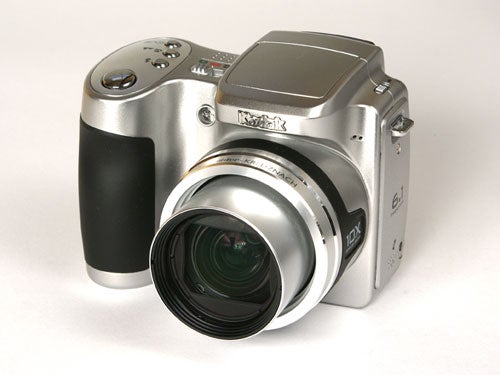
Verdict
Key Specifications
- Review Price: £156.95
Around this time last month I reviewed the Kodak P712, a 12x zoom, 7.1 megapixel high-end camera costing around £300. This week I’ve got its kid brother on the test bench. Where the P712 was aimed at the enthusiast photographer market, the EasyShare Z650 (what is it with naming cameras after motorbikes?) is pitched a little lower, at the point-and-shoot snapshot market. It’s a bit too big to be considered a pocket compact, but for the holiday snapper looking for a little more versatility it seems like the perfect solution. Kodak does a number of things very well indeed, and one of these is to make good, easy-to-use cameras at prices that anyone can afford. There aren’t many manufacturers that can beat it at this game.

The Z650 is a 6.1 MP SLR-style camera with a powerful 10x Schneider Kreuznach Variogon lens. It has a list price of just £199.99, and is available online and in several High Street stores for around £157, which is remarkably good value for a camera with this specification.
It’s a nice looking camera too. It is quite large, with a big comfortable handgrip, a 2in LCD monitor and an electronic viewfinder. Apart from the metal lens barrel, the majority of the body is plastic, but it feels solid and well made. The curved shape gives it an inherent strength and there are no creaks when it’s squeezed, however the card hatch does feel a bit on the flimsy side. The camera is finished in a nice semi-matt silver, with black rubberized areas on the handgrip, around the lens barrel and around the viewfinder eyepiece. It handles well, and feels very comfortable to hold.
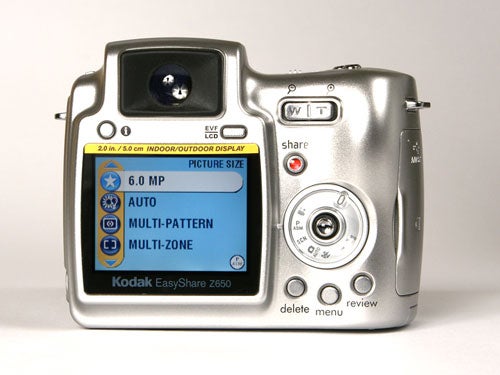
The control layout reflects the simplicity of the camera’s function. The main control is a large illuminated dial on the back, which doubles as both a mode dial and a D-pad for menu navigation. I was very impressed by this. It’s both quick and easy to use, and with the on-screen help it is marvellously simple to understand. The rest of the control layout is similarly simple. Three buttons on the top panel take care of flash modes, macro/landscape focusing, self timer (10 and two seconds plus a double-shot function) and continuous shooting mode. On the back you’ll find, apart from the dial, the menu, delete and review buttons down the bottom, and the ubiquitous Kodak “Share” button, which works in conjunction with the optional printer or USB cradle.
For the most part the control layout is fine, but I did have a bit of a problem with the zoom control. Not only is it slow and unresponsive, it is also positioned so that if you’re looking through the viewfinder with your left eye, as most right-handed people will do (not me – ed.), you can’t operate it without pocking yourself in the eye with your thumb.
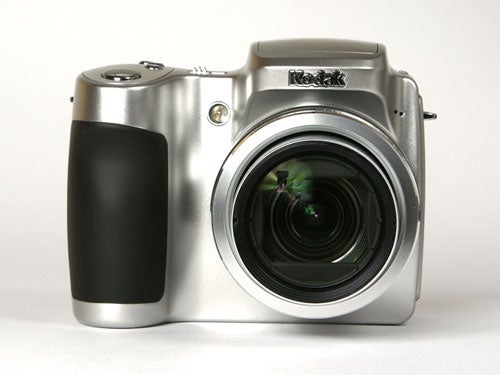
General performance is pretty good, although it has some weak points. The camera starts up in just over two seconds, not bad for a super-zoom camera with a lens this size. Focusing is, however, quite variable. About half the time it focuses very quickly, in well under half a second, but at other times it takes far longer, around one and a half seconds, and sometimes it just won’t focus at all. There didn’t seem to be any rhyme or reason to it, just sometimes it gets a bit lazy. Low light focusing is quite good though, thanks to the built-in AF illuminator which has an effective range of about four meters.
I mentioned weak points, and unfortunately shooting speed is one of them. In single shot mode, at the 6MP resolution setting, it takes around three seconds (not the 1.7 sec. claimed on Kodak’s website) to save each shot to the memory card, during which time you cannot take another shot, which is a bit slow by current standards.
It has two continuous shooting modes, one which takes up to four shots at about ¾ of a second per shot, and another which keeps shooting as long as you keep the button pressed, but then only saves the last three frames. In both cases the camera then takes nearly 25 seconds to save these shots to the memory card.
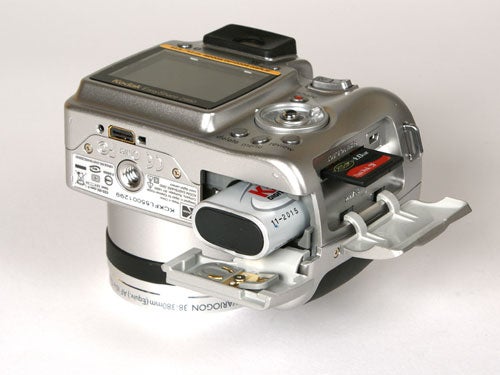
Another weak point is the video mode. Most cameras these days can manage 640 x 480 (VGA) resolution at 30 frames a second, but all the Z650 offers is VGA at a miserable 11fps, or 320 x 240 (QVGA) at 20fps. You can’t use the zoom lens while shooting video.
The Z650 is equipped with what Kodak calls an “indoor/outdoor” LCD monitor. What this means is that it has an automatic gain and brightness control, so it adjusts its brightness to suit the ambient light conditions. In practical use this means that in low light conditions it becomes very grainy, although in bright sunlight it brightens up enough to see. With only 110,000 pixels it’s also not very high resolution.
The camera also has an electronic viewfinder, however I was not impressed with it. On my review sample it seemed to be slightly out of focus, and there was no way to adjust it. It also seemed to be prone to unusual colour casts, which really didn’t help.
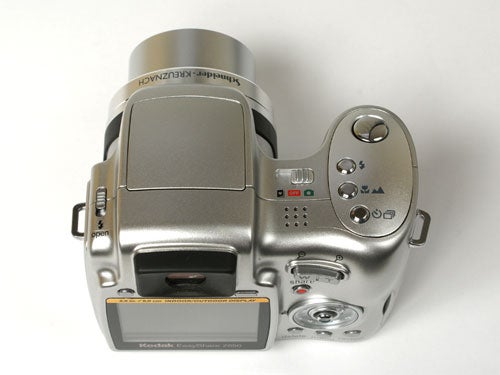
Since it is aimed squarely at the budget point-and-shoot end of the market, the Z650 isn’t exactly bursting at the seams with creative features. It does have manual exposure options, and the aperture range of F2.8 to F8 is almost wide enough to be genuinely useful. It also has a selection of scene modes, but they are all very basic.
In program mode the full range of menu options becomes available, and these do include spot, multi-pattern or centre-weighted metering, multi-zone or centre-zone focusing, and adjustable sharpening, but that’s pretty much your lot.
One feature that is most notable by its absence is image stabilization, a serious omission on a camera with a lens this big. At 380mm equivalent, there is always going to be a risk of camera shake at any shutter speed under about 1/500th of a second unless a good tripod is used.
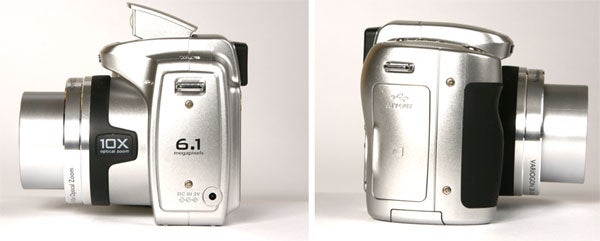
Fortunately the Z650 does have one major strong point, and that is image quality. The Schneider Kreuznach lens is as usual superb, producing pin-sharp focus right across the frame, with virtually zero distortion at all focal lengths. The Kodak Colour Science processing engine does the rest, turning in gorgeous colour reproduction in every shot. The image files produced at the 6MP setting are around 0.8-1.5MB each (528 shots on a 1GB card) but even so there was very little JPEG artefacting. Image noise is also very well controlled. The Z650 has an ISO range of 80-400, but even at the highest setting there was very little noise.
”’Verdict”’
The Kodak EasyShare Z650 is something of a Curate’s egg. While it does have some fairly serious flaws, it does offer a lot of image quality and zoom power for a very low price. The slow performance, lousy video mode and limited range of features are a downside, but you’d have to go a long way to find a better 10x zoom for under £160.
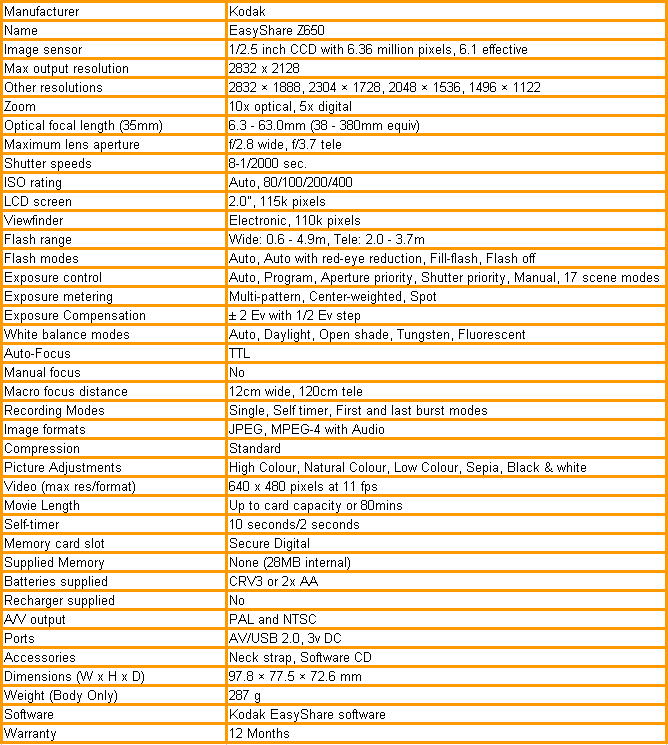
A range of test shots are shown over the next three pages. Here, the full size image has been reduced for bandwidth purposes, and a crop taken from the original full resolution image has been placed below it in order for you to gain an appreciation of the overall quality. The following pages consist of resized images so that you can evaluate the overall exposure. For those with a dial-up connection, please be patient while the pages download.
—-

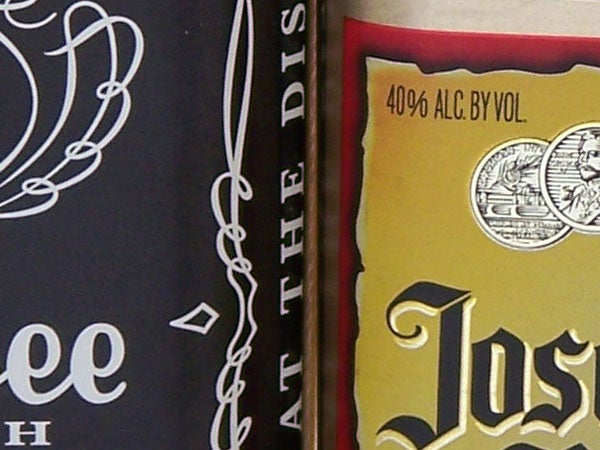
1/15th, F3.2, 80 ISO
At the lowest sensitivity setting, the image is crystal clear, the colours are natural-looking and there is a high level of detail.
—-
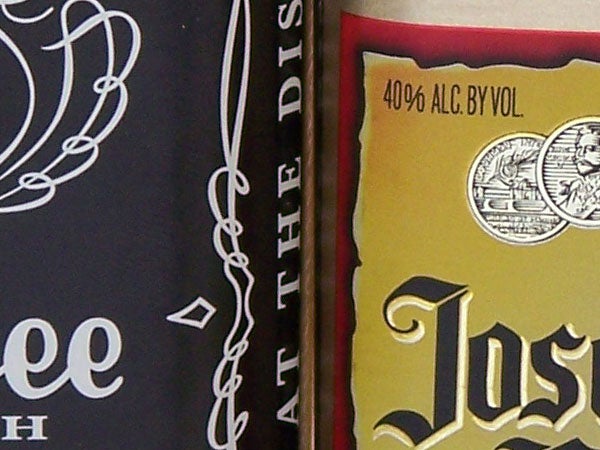
1/20th, F3.2, 100 ISO
At 100 ISO there is still no image noise visible in the picture, not too surprising since it’s only 1/3rd of a stop higher.
—-
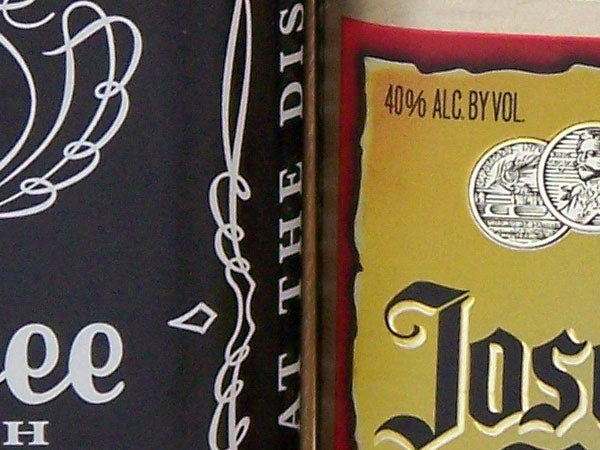
1/40th, F3.2, 200 ISO
At 200 ISO there is a little bit of colour speckling in the darker areas of the image, but you’ve got to look pretty damn hard to see it.
—-
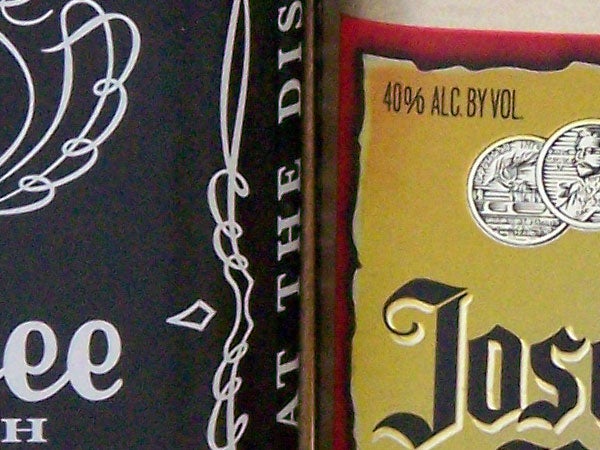
1/60th, F3.2, 400 ISO
At the highest ISO setting of 400 there is still surprisingly little image noise, and what little there is is restricted to the darker areas.
—-
This page consists of resized images so that you can evaluate the overall exposure.
—-
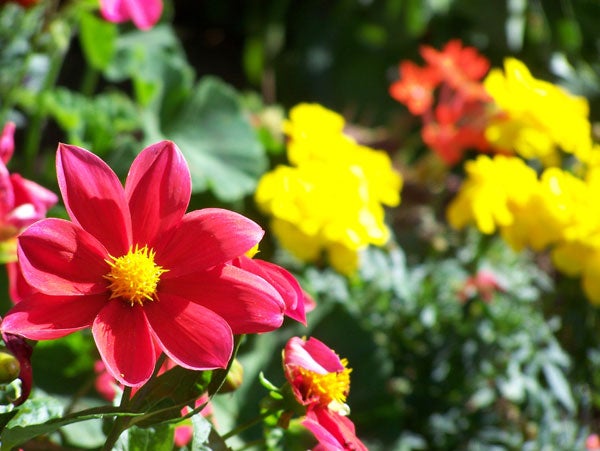
The Kodak Colour Science image processing engine does a fantastic job of reproducing bright natural colours without over-saturating.
—-

The Z650 copes quite well with contrasty shots like this, despite only having a 1/2.5 inch CCD.
—-
This page consists of resized images so that you can evaluate the overall exposure.
—-
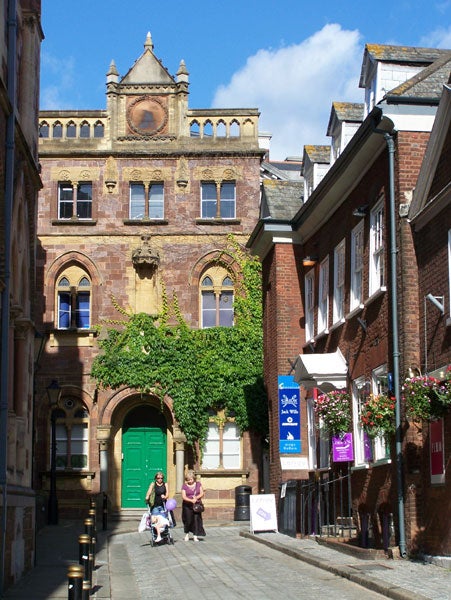
The Z650 is at its best taking snapshots like this. The colours are perfect and there’s plenty of detail for large prints.
—-
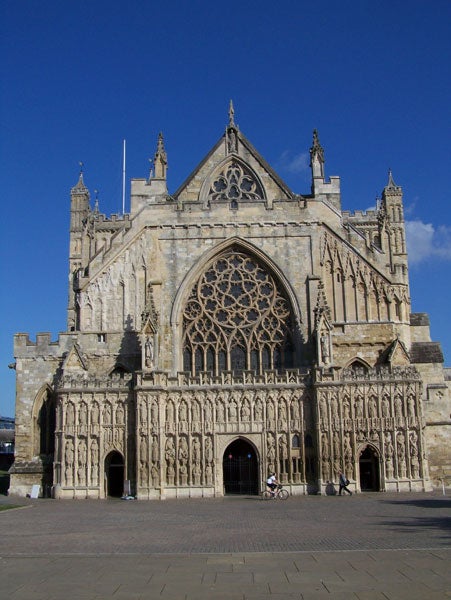
The Z650’s excellent lens produces hardly any distortion at wide angle.
—-
This page consists of resized images so that you can evaluate the overall exposure.
—-
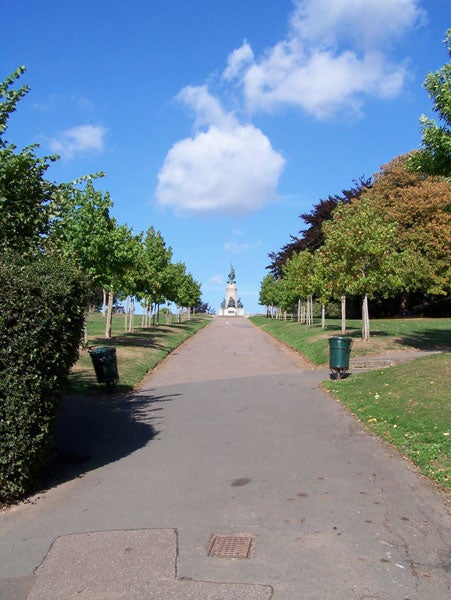
The 10x zoom Schneider Kreuznach lens has a wide end equivalent to 38mm on a 135 camera. Compare this shot with the Samsung Pro815.
—-

Taken from the same spot as the shot above, this shows the power of the telephoto end of the zoom, equivalent to 380mm.
—-
This page consists of resized images so that you can evaluate the overall exposure.
—-
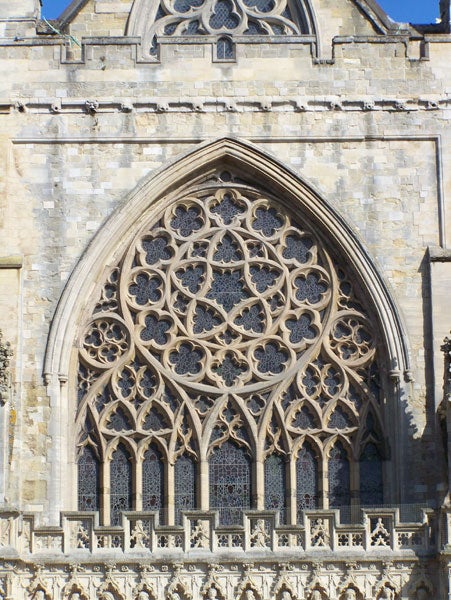
This is the front window of Exeter Cathedral. Below you’ll find a 100% enlargement of the centre section of this shot.
—-
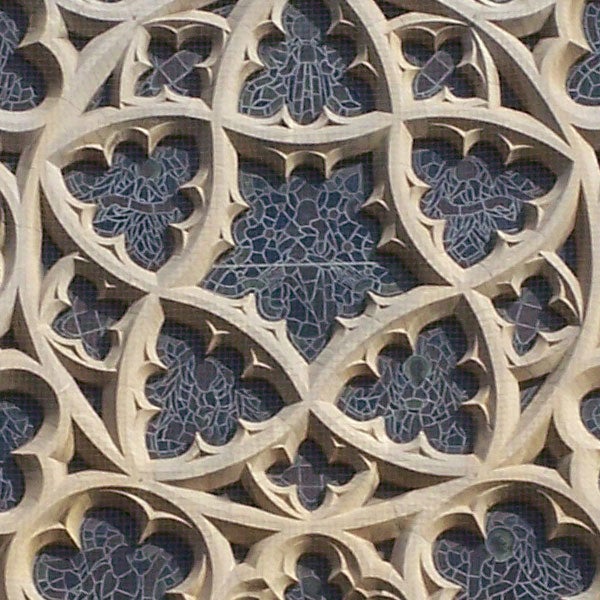
This 600 x 600 pixel enlargement at 100% zoom of the centre section of the image above, shows the level of detail the Z650 produces. That square grid pattern is anti-pigeon netting.
—-
Trusted Score
Score in detail
-
Value 9
-
Image Quality 8
Features
| Camera type | Super Zoom |
| Megapixels (Megapixel) | 6.1 Megapixel |
| Optical Zoom (Times) | 10x |

